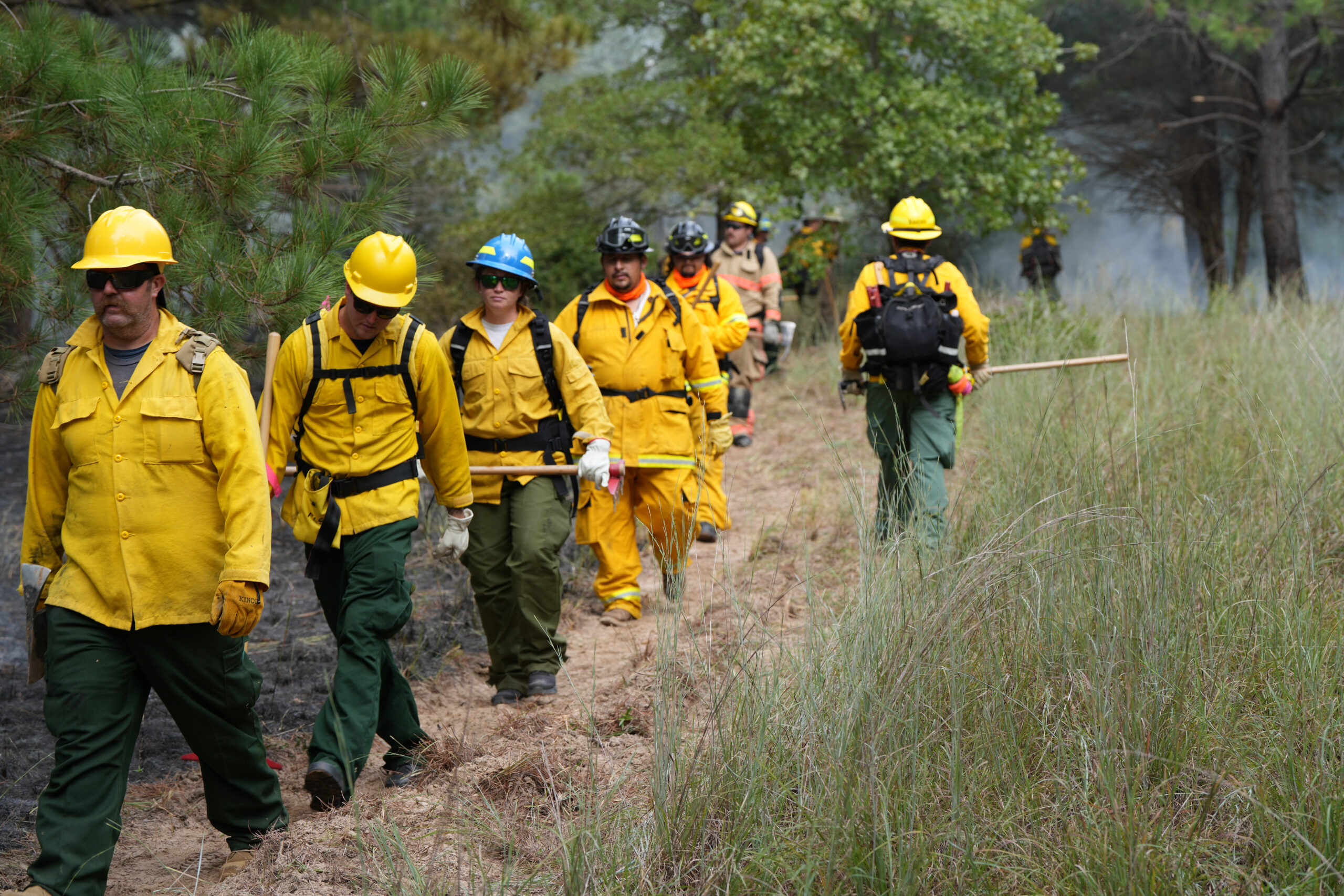AgriLife Extension seeks to resolve underground fire mysteries
Writer: Steve Byrns, 325-653-4576, [email protected]
Contact: Dr. Morgan Russell, 325-653-4576, [email protected]
CHRISTOVAL – Wildfire destruction above ground appears obvious, but what happens underground after a major fire is still somewhat of a mystery, said Texas A&M AgriLife Extension Service range specialist Dr. Morgan Russell.
Russell and Grant Teplicek, U.S. Department of Agriculture Natural Resources Conservation Service grazing land specialist, both of San Angelo, are working with Bill Mabe, Head of the River Ranch manager near Christoval, to monitor the after effects of a major wildfire that swept through the area late last summer.

Russell’s aim is to determine if the intense heat and dryness the range experienced will have a detrimental effect on the long term soil structure and its nutrient and organic matter content. In short, she is assessing the health of the soil as it relates to future plant growth.
“On Aug. 14 we had a range fire that was started, from all indications, due to a lightning strike from a small, dry thunderstorm that came through,” Mabe said. “It spread that evening and the local fire departments got it pretty well under control. But on Aug. 15, we had a wind shift and the wind got up and the fire spread. The total on us and the adjoining properties burned was probably somewhere in the neighborhood of about 5,300 acres.”
Since the fire, Mabe has been constantly monitoring its effect on the range. On one such occasion, he discovered a massive centuries-old live oak tree that was still smoldering a month to the day following the fire.
Russell said with such a large, hot fire occurring during some of the hottest weather of the season, a real concern was the below ground effect from the fire and what was going to be available for range plants to thrive in the future.
“Mr. Mabe and I inserted a number of soil probes to measure all the nutrients that occur after a fire,” she said. “All that carbon from the above ground vegetation is burned and goes back into the soil. We just don’t know exactly what the nutrients are and what rate they are available for plants to uptake. So we put these probes in on a number of sites to measure that.
“The probes were buried in the soil at about a 10 centimeter depth for around eight weeks. They measure a variety of different nutrients, everything from total nitrogen to phosphorous to potassium to calcium. It’s a complete analysis that’s being done in order to analyze and to better estimate what’s going to be produced above ground from the below ground effects from the fire.
“It’s important to know because we don’t have all the answers to fire effects and we’re really trying to tweeze apart what plants respond better to different timing of fires, different seasons of fire and how hot a fire burns. This is all part of a bigger picture of rangeland management where fire has played a role on pastures. We’re trying to isolate those effects to see what the nutrient content of the soil is and better understand what our native rangeland plants have to work with, preferably native perennial grasses,” she said.
Russell said the probes are sent to a lab in Saskatchewan, Canada, for analysis.

“The samples go to Canada because they are a special kind of probe that measures nutrients that are currently being utilized by plants,” she said. “A soil test, while very useful under normal circumstances, only measures what is in the soil and not what is useable by plants, what they are actually using.”
Once the findings are in and recommendations established, she plans to use the information to create an AgriLife Extension educational publication in 2016 for landowners and managers.
In the meantime, rain has fallen on the Head of the River Ranch and its neighbors affected by the fire, making Mabe optimistic about the future.
“We’ve really seen a tremendous amount of growth, particularly a lot of the grasses are coming back and some areas I think we’ve got probably over 90-95 percent regrowth on grass loss,” he said. “And a lot of the forbs are coming back, particularly the California and Texas filarees, which in some areas are covering the entire pasture.”
Teplicek is optimistic as well and feels if enough soaking rain falls within a reasonable time that the forage recovery should be rapid.
“Hopefully our frost will hold off so the new grass will be well-established before our first freeze hits here,” Teplicek said. “If rainfall keeps falling like it is, within two years it will be back to normal, I think. If it falls off on rainfall with below normal amounts, then it’s going to be pushing more like four or five years down the road.”
Teplicek recommended waiting until the fall of 2016 before grazing if the current good conditions continue.
“I’d graze it next fall after the frost during the dormant season; hit your warm season grasses and your winter grasses down in the river bottoms and creek bottoms. Graze it just lightly; you don’t want to hit it too hard, then move on to your next pasture and let this burned area rest again and be ready for the third year.”
Mabe said he’s had a lot of advice from various agencies and private consultants as to what to expect.
“I think one person summed it up best when he said only nature is going to make this country heal back up, and I think that’s probably the best advice,” Mabe said. “It’s just going to take time and the right rainfall.”





